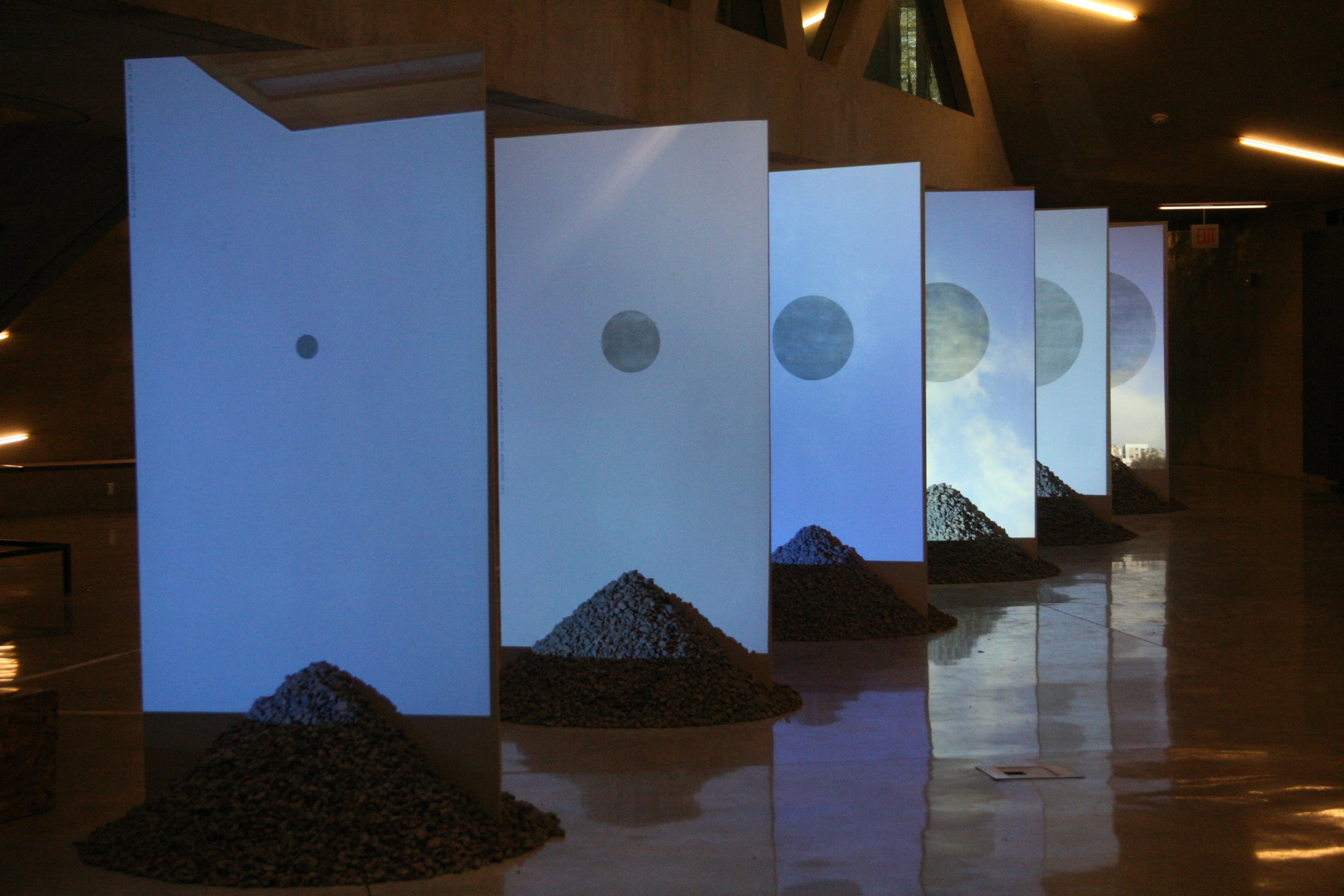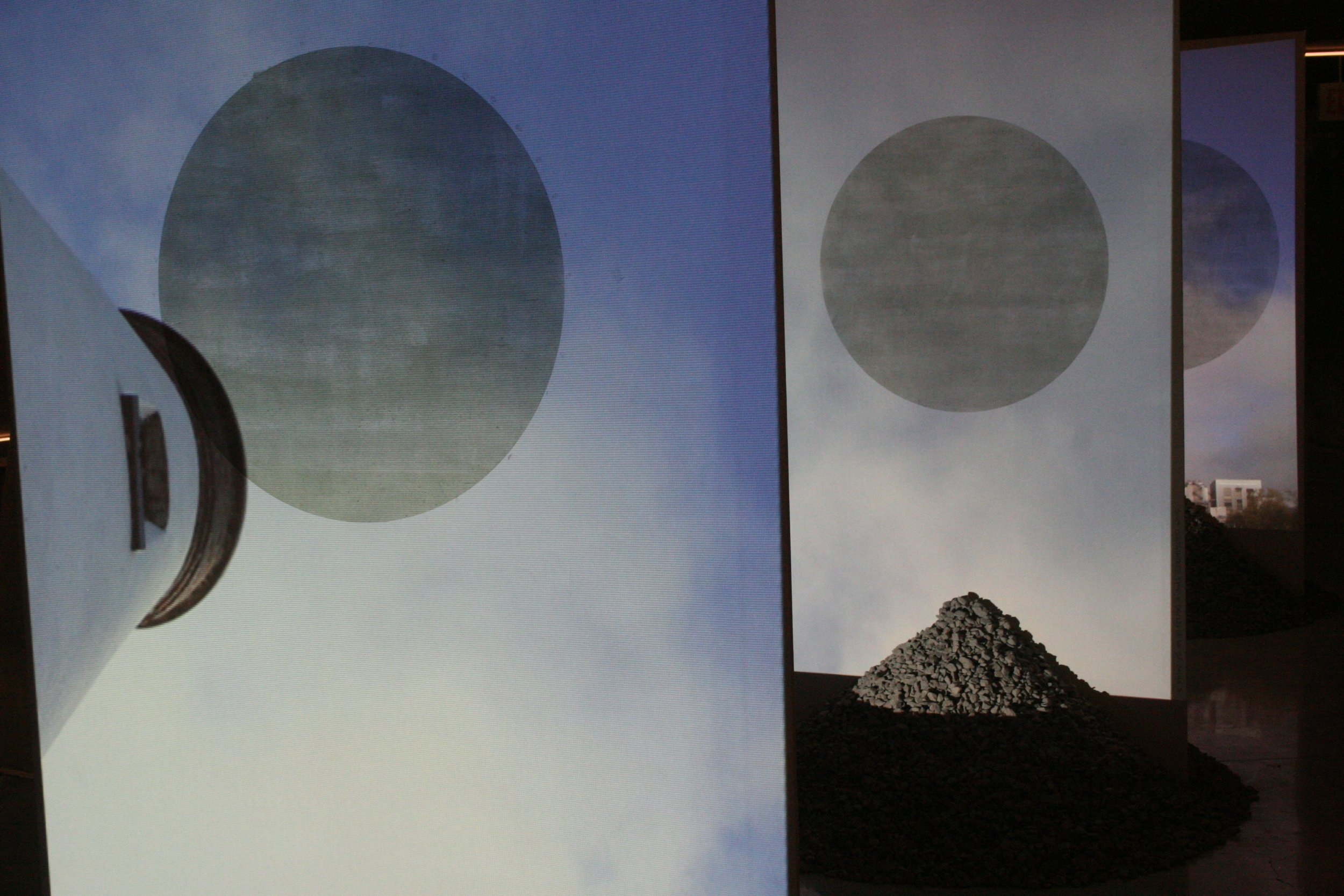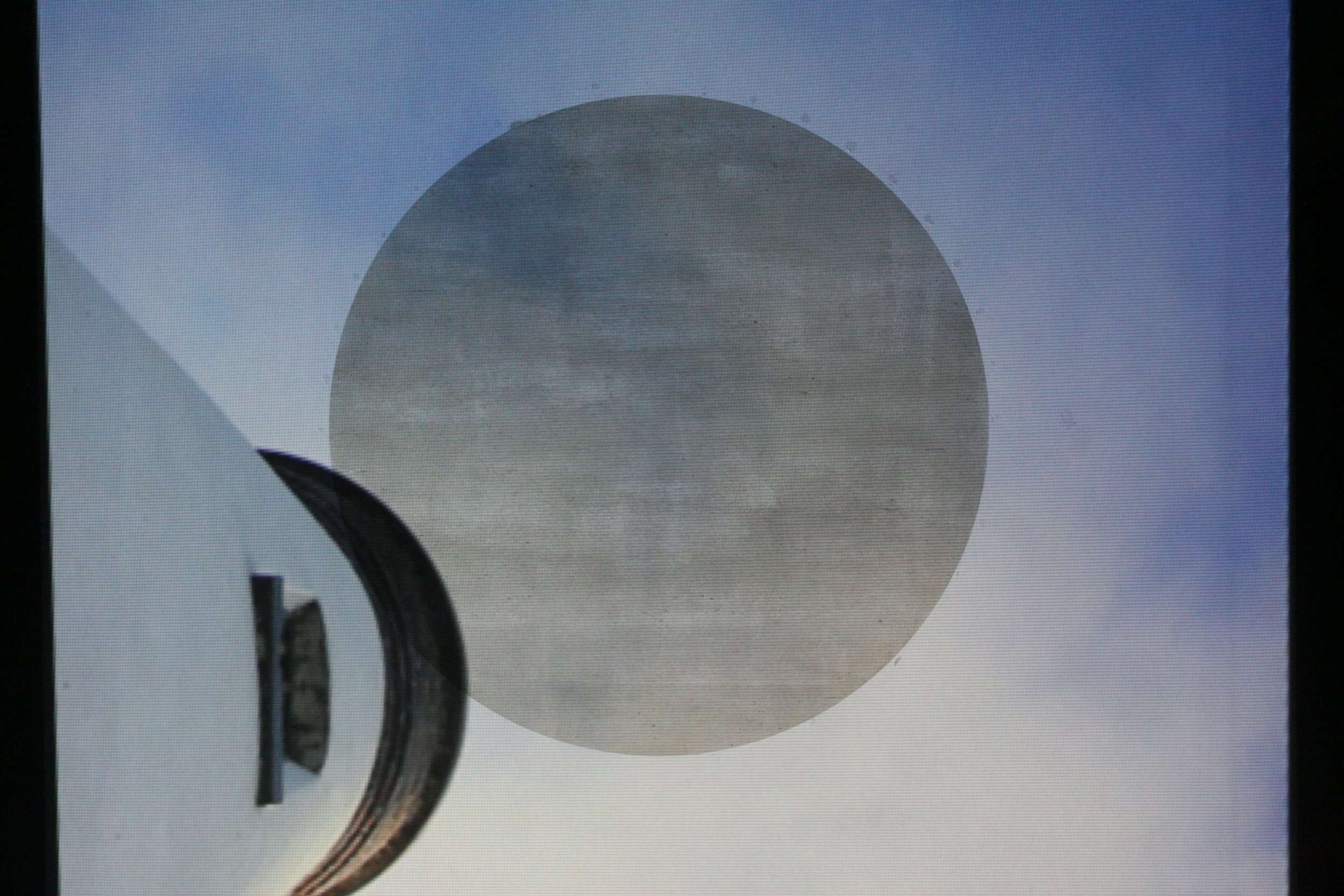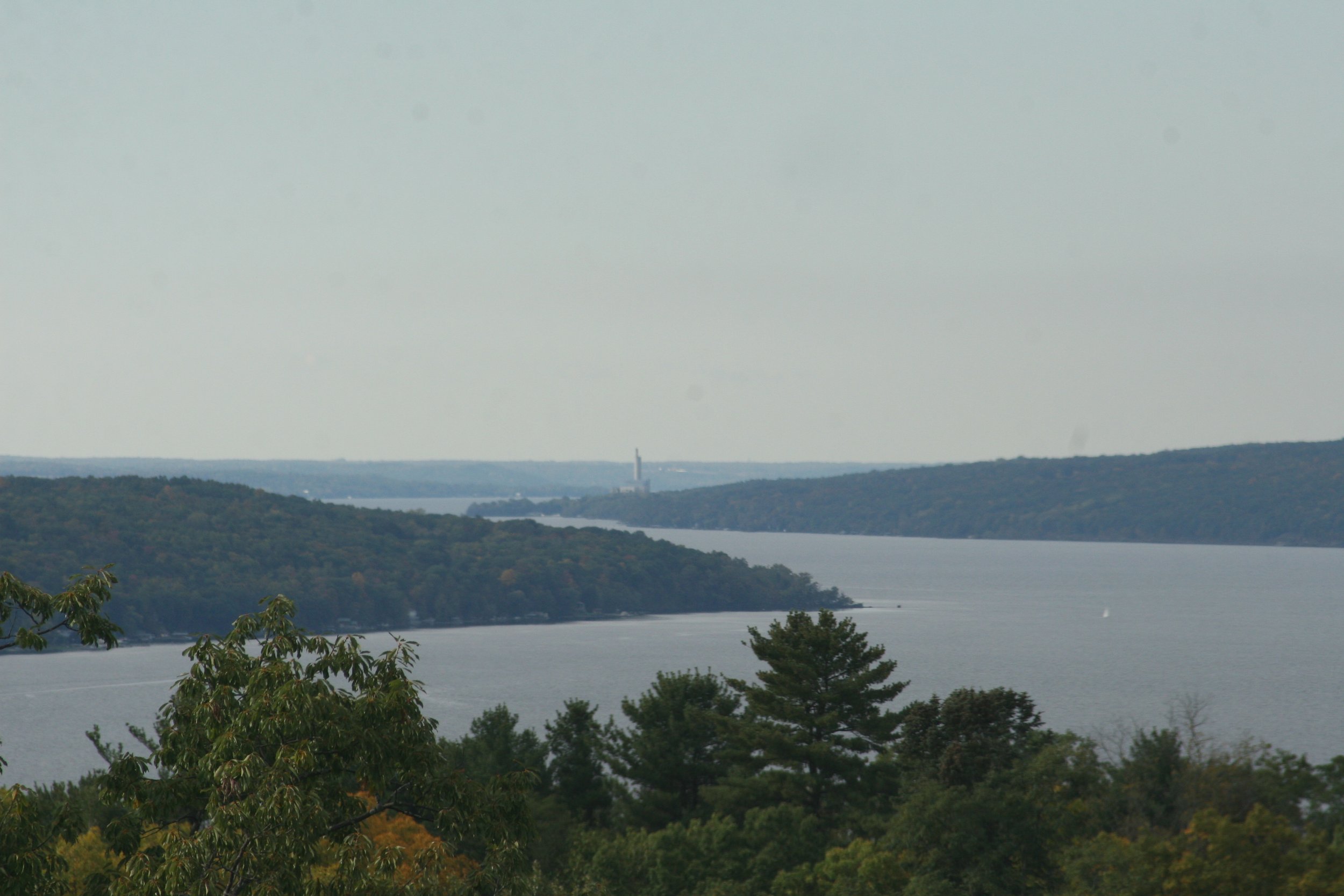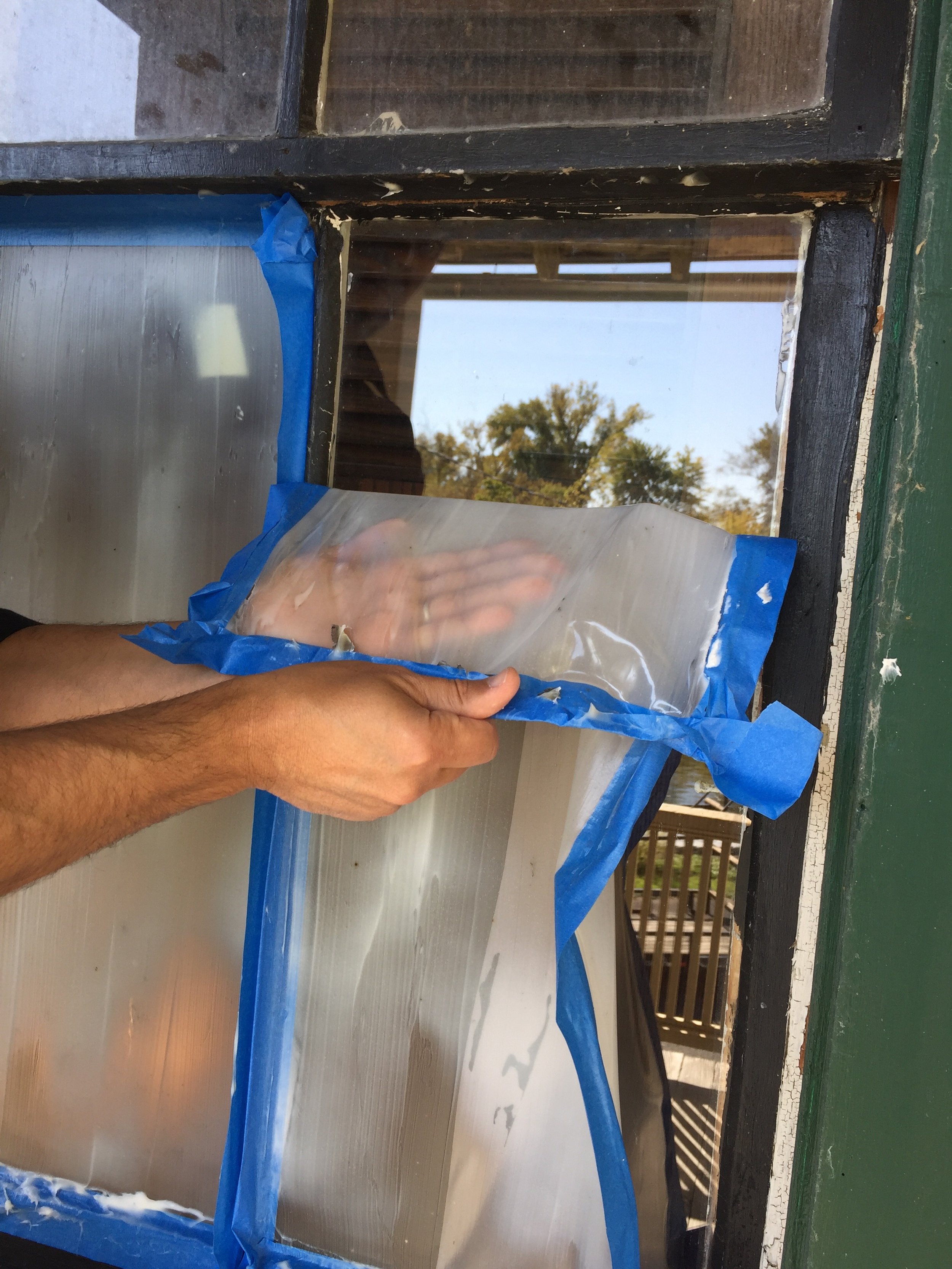I’ve been inspired to use atmospheric dirt and dust as a primary source material for my work when invited to reflect on the legacy of the landmark 1969 Earth Art exhibition at Cornell University in 2019.
I wanted to find a new way of experiencing the iconic view associated with Cornell. Rather than looking from the Johnson Museum down to Cayuga Lake, I wanted to run our eyes up to the sky with a six channel video mapping the atmosphere along the signature sight line between Cornell and the Cayuga Power Plant. Our ability to see the lake depends on the quality of the air. So my installation focuses on the pollution suspended in the air and its enormous effect on our aesthetic appreciation, and on the climate.
The six videos are individually projected onto a row of drywall panels that are held up by mounds of local Finger Lakes limestone. I chose drywall panels and limestone in reference to the Cayuga Lake coal-fired power plant that produces sulfur dioxide, which in turn reduces visibility and turns the air into a reddish haze.
To reduce emissions per the 1990 Clean Air Act Amendments, sulfur dioxide is made to react with limestone in the smokestack, making gypsum. That gypsum is sold to make the drywalls that surround us all. Cornell’s iconic view is preserved through an industrial process that changes the material composition of stones and aerosols, of the earth and the sky.
I painted each drywall panel with a single circle using dust that I cleaned from windows in buildings overlooking Cayuga Lake. The circle is small in the first panel and grows larger in each subsequent panel. Seen together, the circles form an imaginary cone of dust, like the telescoping view to Cayuga Lake. Cornell’s iconic view contains man-made dust, and that our ability to fight the climate crisis rests on how we deal with that dust.
Images
1. Installation time lapsed, at Cornell University in 2019.
2-4: Installation of “Far Above: View from Cornell University of Cayuga Lake”2019 at Cornell University.
5-7: Process picture, removing dirt from windows of buildings located in the viewshed from the Johnson Museum to Cayuga Lake.
